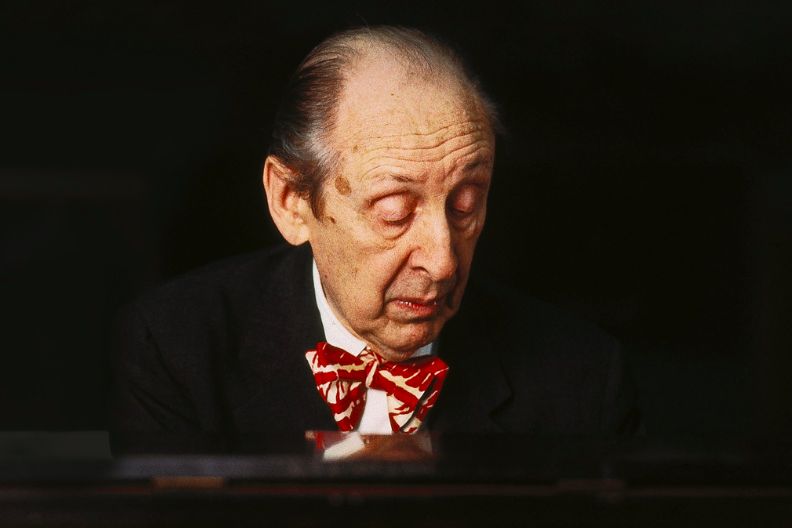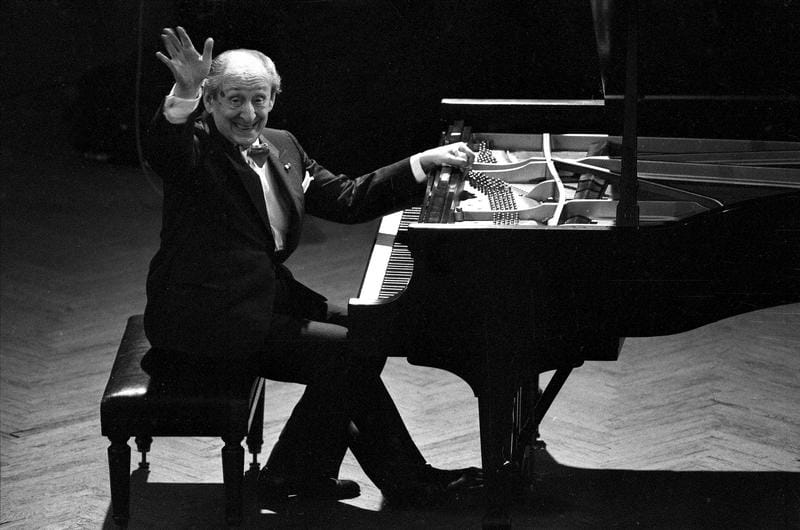
©Christian Steiner/DG
The most famous pianist of the twentieth century, his name known to the proverbial man on the street the world over, Vladimir Samoylovich Horowitz (1903–1989) was born in 1903 in Kiev. Through his chart-topping recordings from the early 1930s to the late 1980s and thunderously exciting, sold-out concerts across the globe, Horowitz was the epitome of the classical pianist as virtuosic dynamo, one whose derring-do was an inescapable influence on subsequent generations of pianists. Horowitz showed enough prodigious talent to play for Alexander Scriabin in 1915, just before the Russian composer-pianist’s early death. Horowitz would become a superlative interpreter of Scriabin’s music, which the pianist described as “mystical… expressionistic.” Horowitz also became friends with another great Russian composer-pianist (and Scriabin’s former schoolmate), Sergei Rachmaninoff – who was the acme of Romanticism. Horowitz performed Rachmaninoff’s Piano Concerto No. 3 as his graduation piece at Kiev Conservatory, going on to perform the work in the composer’s presence, make its premiere recording (in 1930) and then record it again twice more. He also made a benchmark recording of Rachmaninoff’s Piano Sonata No. 2. Emigrating from Russia in 1925 and eventually settling in New York City, Horowitz made his American debut with Tchaikovsky’s Piano Concerto No. 1 in 1928 at Carnegie Hall, which would become his home venue, the site of many recordings. Impressed by the pianist’s tonal dynamism, conductor Thomas Beecham, who led that concert, reportedly said: “Really, Mr. Horowitz, you can’t play like that – it shows the orchestra up.” Horowitz made a series of solo recordings for HMV at London’s Abbey Road Studios in 1932, including several Chopin pieces and an electrifying take on Liszt’s B Minor Sonata, helping to establish the piece in the standard repertoire. A review of a 1933 London concert declared Horowitz “the greatest pianist dead or alive.” The same year, he married Wanda Toscanini, the daughter of Arturo Toscanini, the iconic conductor. Horowitz would make hit recordings with Toscanini of the Tchaikovsky concerto and the Brahms Piano Concerto No. 2 in 1940–41.
Over the course of his career, Horowitz’s recorded repertoire stretched far beyond those early specialties of Chopin, Brahms, Liszt, Tchaikovsky, Scriabin and Rachmaninoff; in long associations for RCA, then Columbia and, finally, Deutsche Grammophon, Horowitz also ranged from Scarlatti, Haydn and Clementi to Beethoven, Schumann and miniatures across the ages with artistic and commercial success; in a period of applying himself to modern music, he premiered Samuel Barber’s Sonata in 1950, along with recording sonatas by Prokofiev and Kabalevsky. Driven to “grow until I die,” he said, the pianist reapplied himself to select Beethoven sonatas in his middle period and then several Mozart works as he grew older. Horowitz also crafted his own transcriptions and arrangements, including such showstoppers as his variations on Carmen and Stars and Stripes Forever (the latter of which he debuted at Carnegie Hall in 1945 to celebrate the end of World War II, with a reprise in Central Park). In his book The Great Pianists, critic Harold Schonberg wrote: “As a technician, Horowitz was one of the most honest in the history of modern pianism. He achieved his dazzling effects by fingers alone, using the pedal sparingly. Notes of scales could not have been more evenly matched; chords could not have been attacked more precisely; octaves could not have been sharper or more exciting; leaps could not have been hit more accurately... He had worked out his own technique, one that ran counter to established traditions of hand and arm. His hands were turned out; he used a low wrist and flat fingers; the little finger of his right hand was always curled tight until it had to strike a note. When it did, it was like the strike of a cobra… Above all, there were his stupendous fortissimos, that orchestral body of tone.”
Famously high-strung, his art always a mental-physical high-wire act, Horowitz took four sabbaticals from public performance to deal with various issues, his returns much-ballyhooed events. The first layoff was for two years in 1936; the longest was 1953 to 1965, followed by a tremendous homecoming to Carnegie Hall. But even over his later breaks, he recorded regularly at home in his Manhattan townhouse, documenting his art as it subtly evolved even beyond great venues and the recording studio. A 1985 film, The Last Romantic, captured the pianist in his last years, performing at home as well as reminiscing about Scriabin and Rachmaninoff. The next year, Horowitz returned to Russia, 61 years after leaving — a hugely emotional event for both artist and audience, documented in the concert album and film Horowitz in Moscow. In 1987, he played his final recital, in Hamburg; he died two years later. Although not a prolific teacher, Horowitz mentored such notable pianists as Byron Janis, Gary Graffman and Ronald Turini, along with coaching Murray Perahia early in his career. “Piano playing consists of intellect, heart and technique,” Horowitz said. “All should be equally developed. Without intellect, you will be a fiasco; without technique, an amateur; without heart, a machine. The profession has its perils.” —Bradley Bambarger
